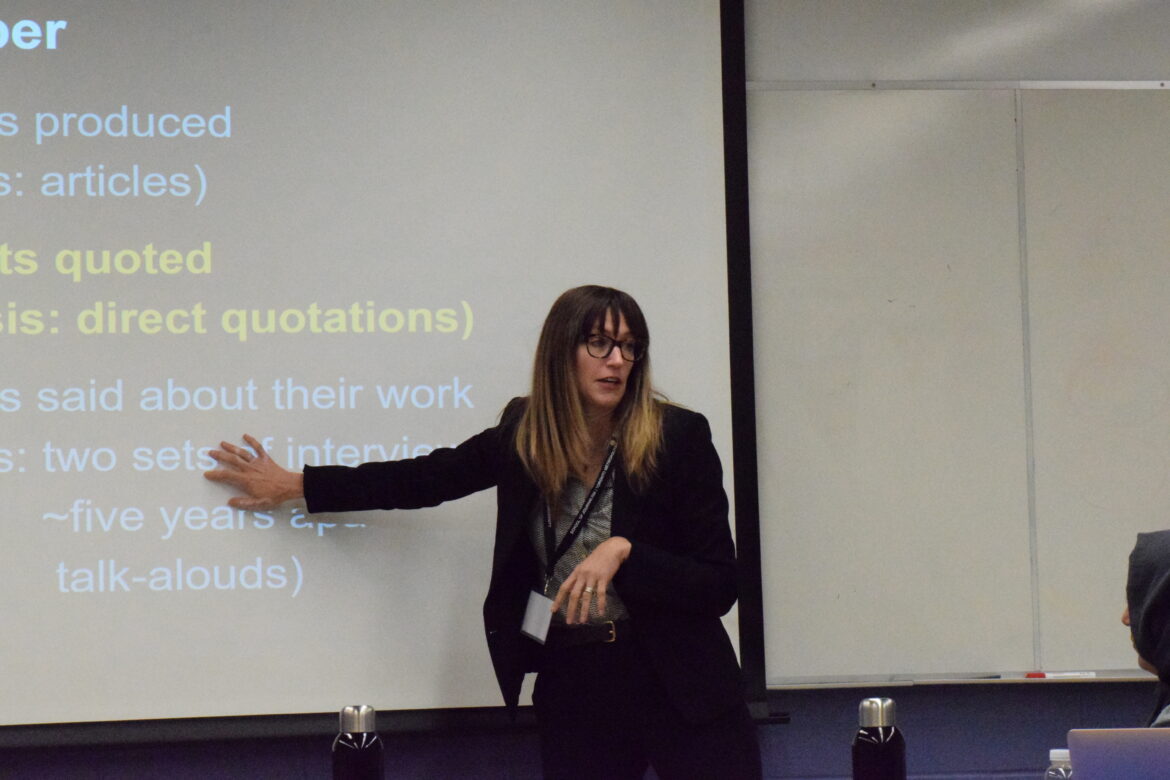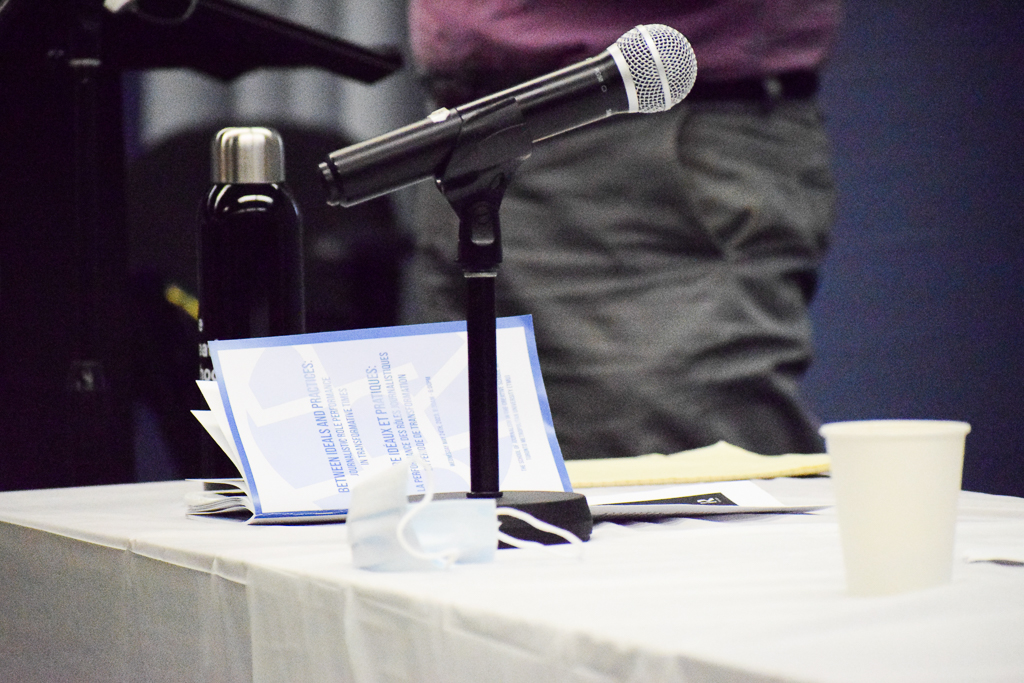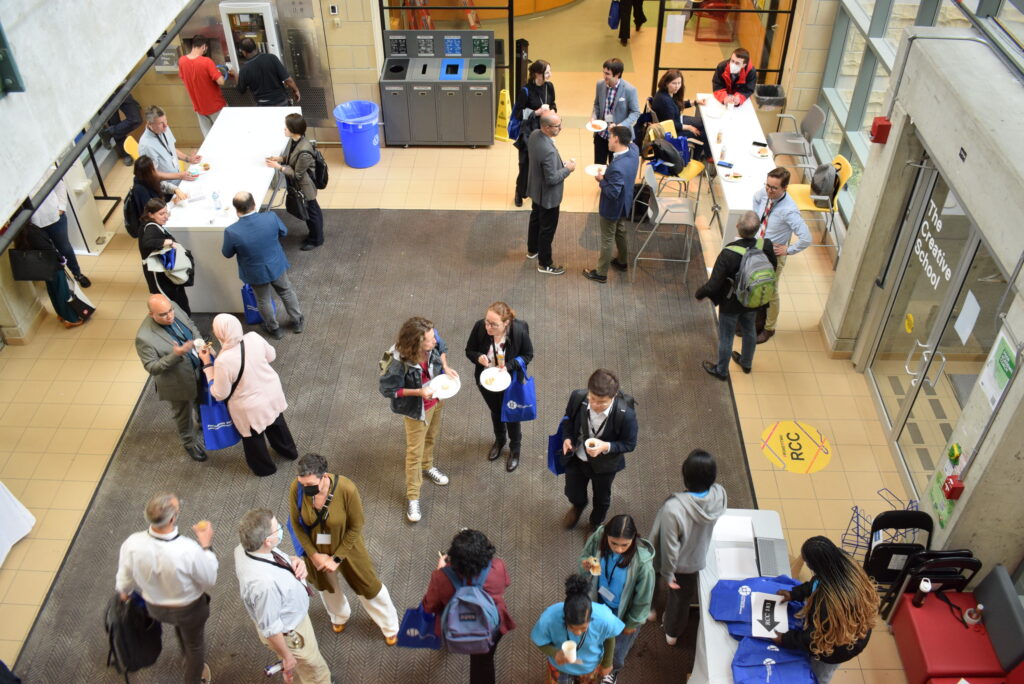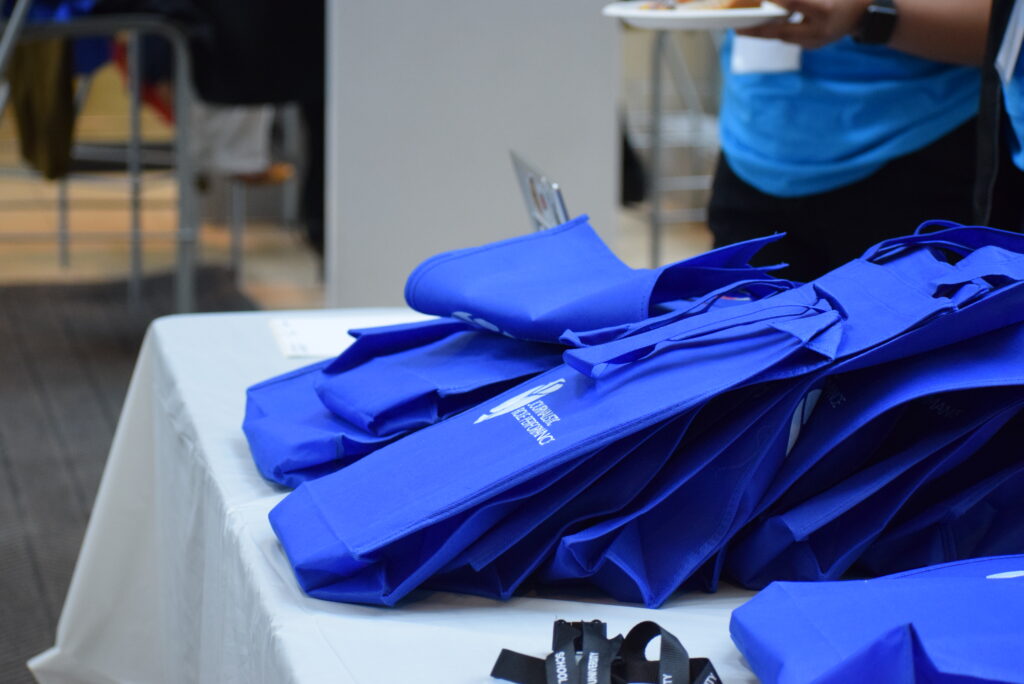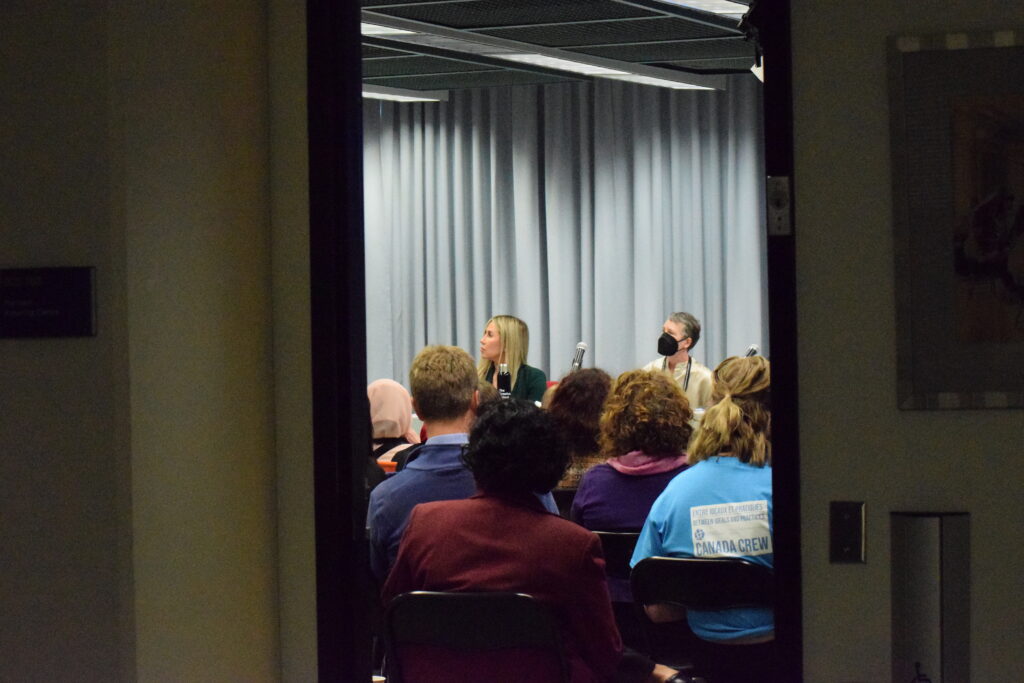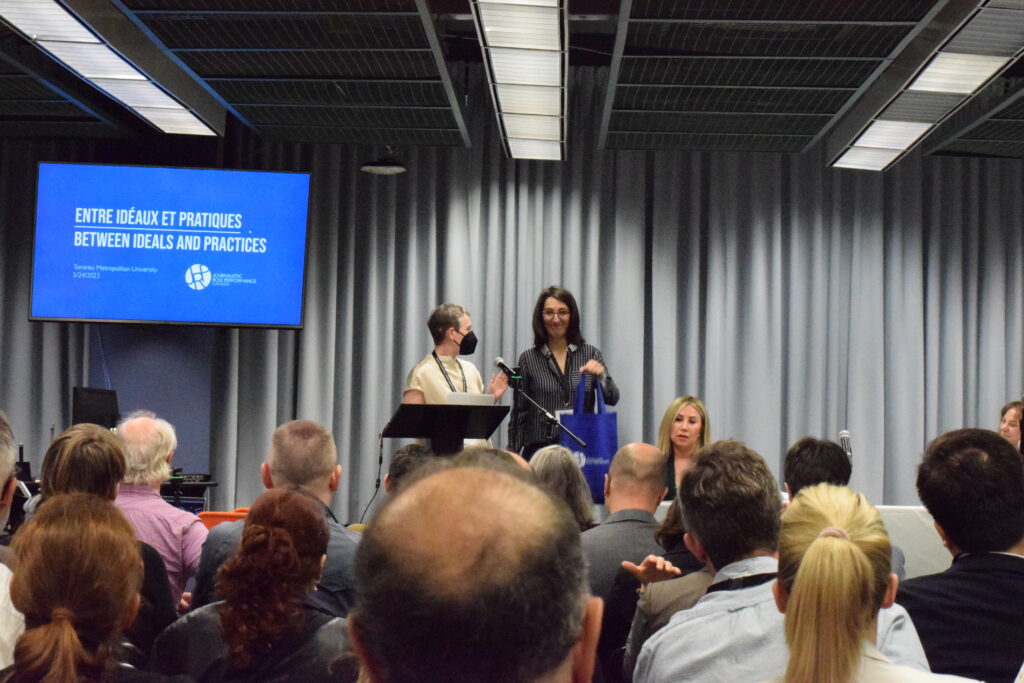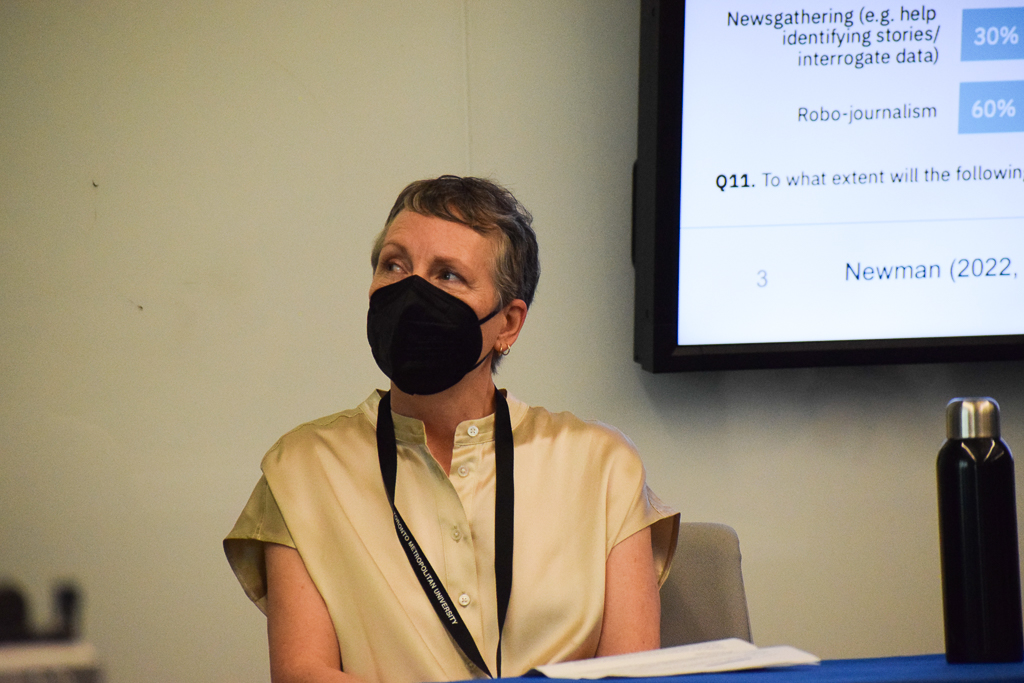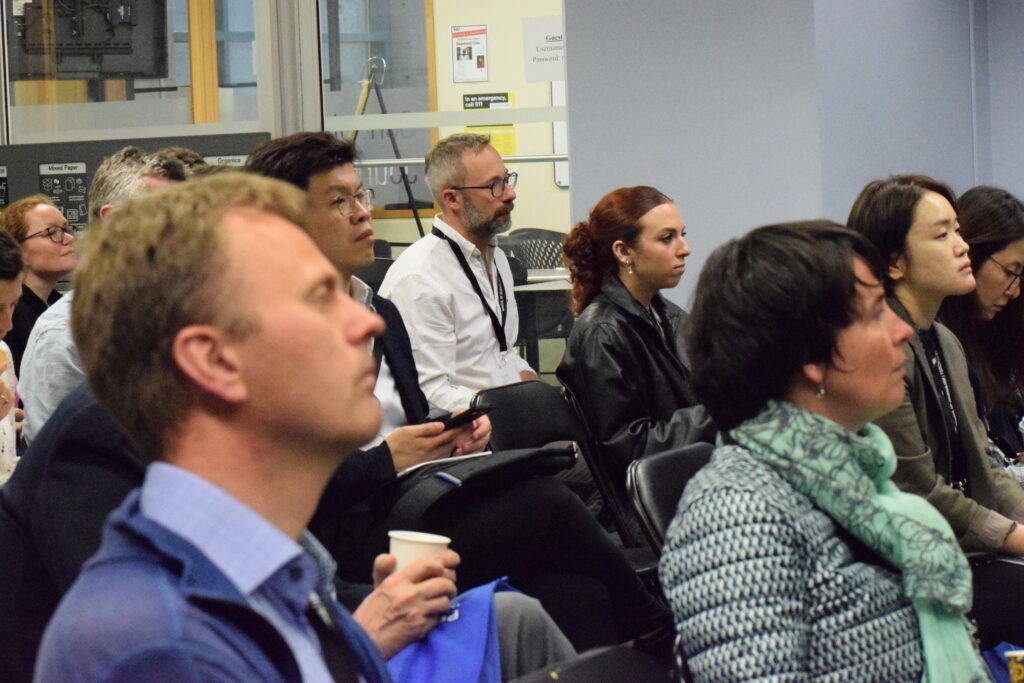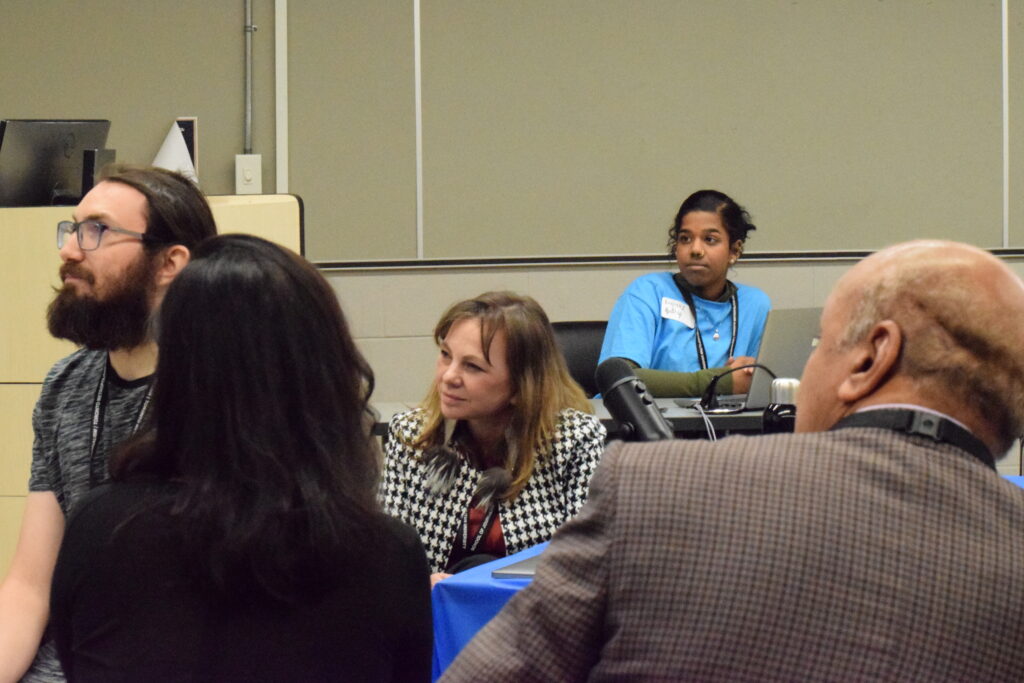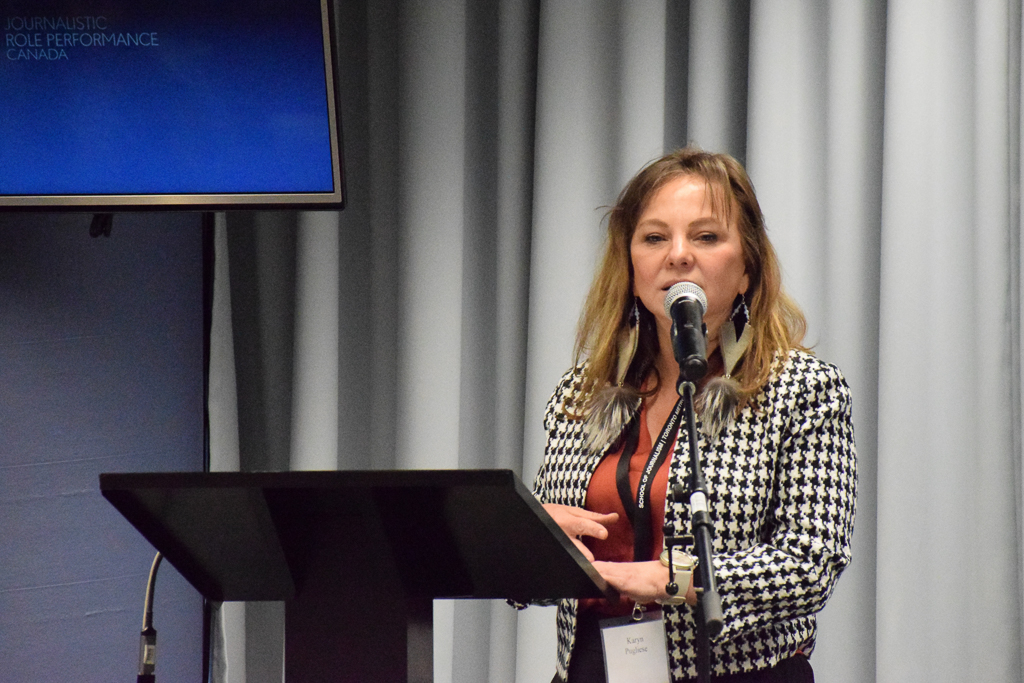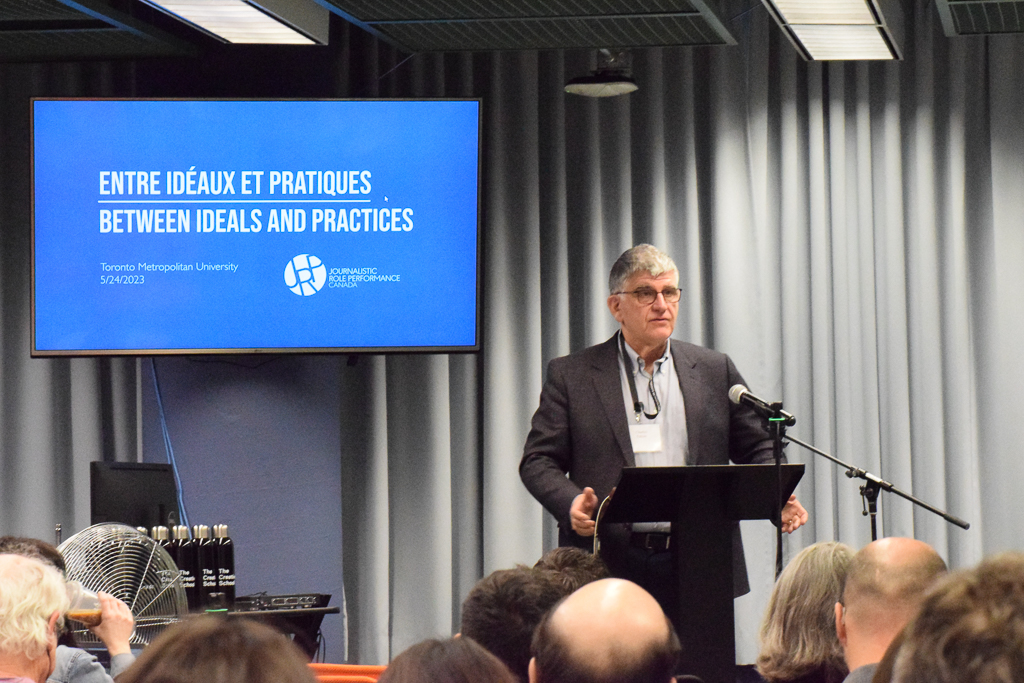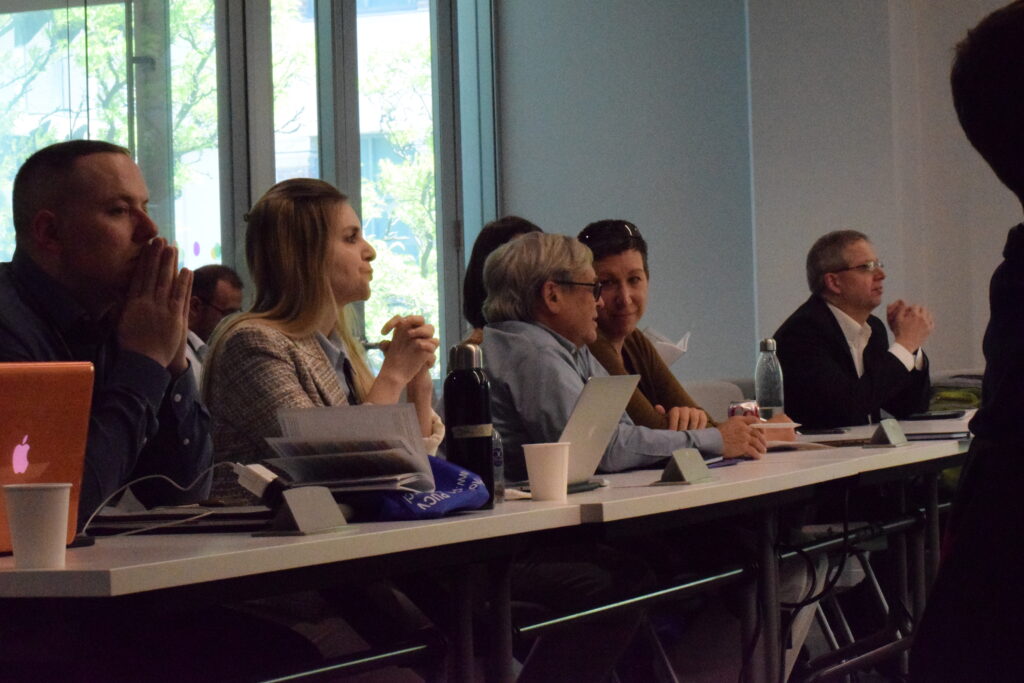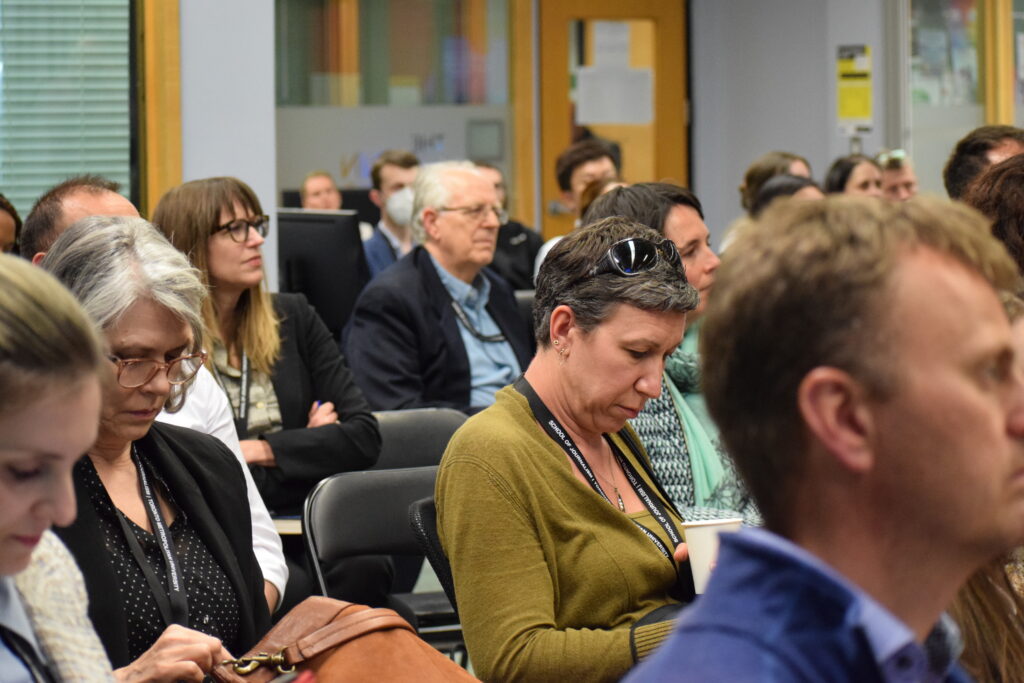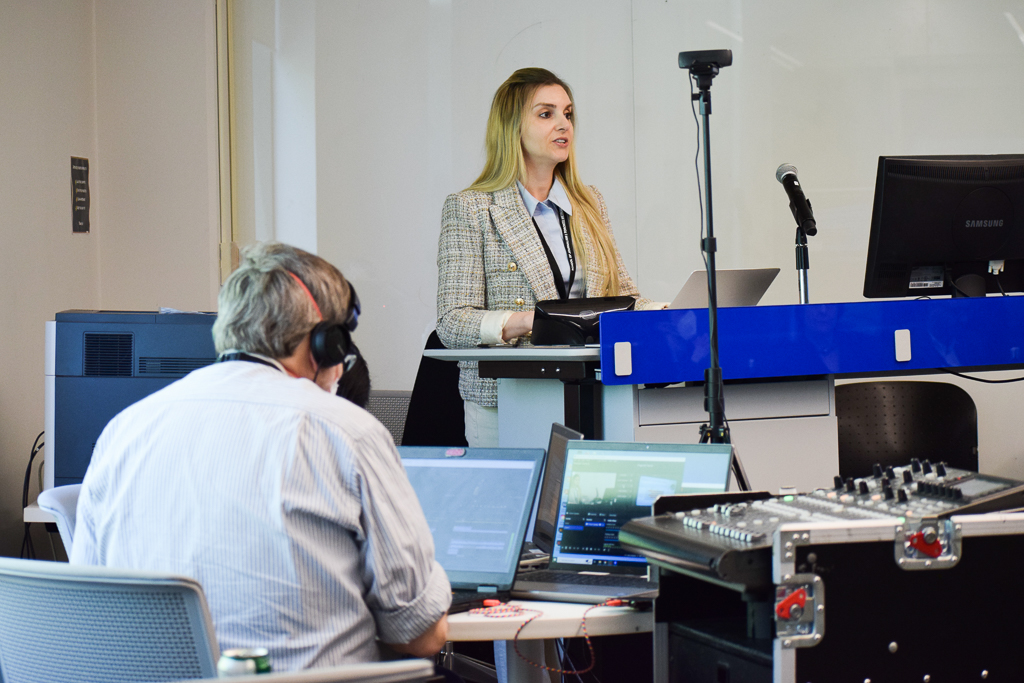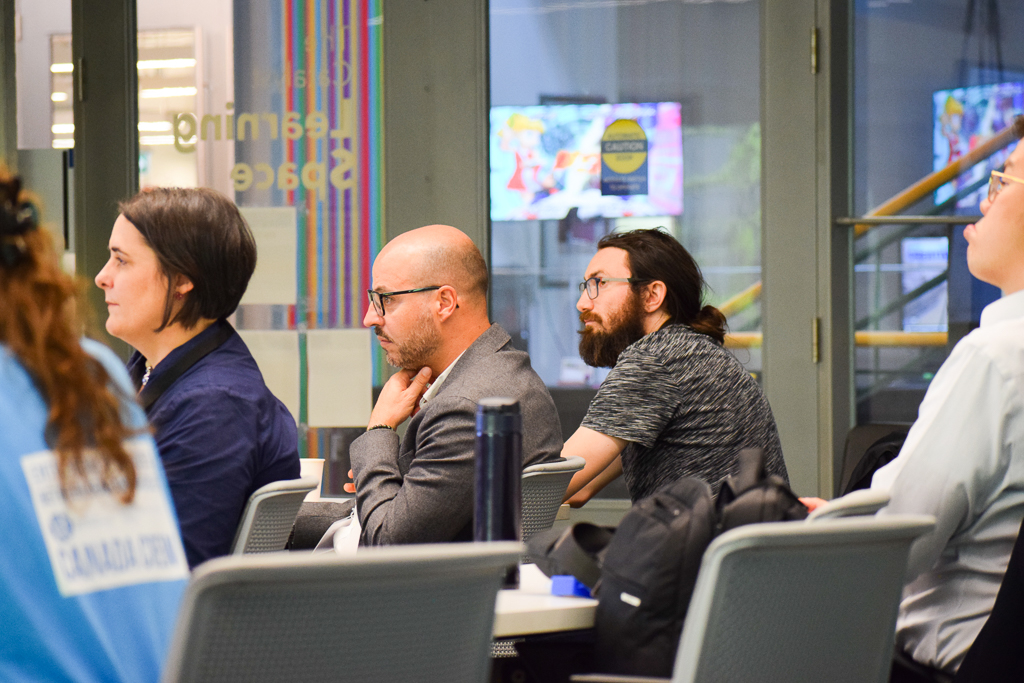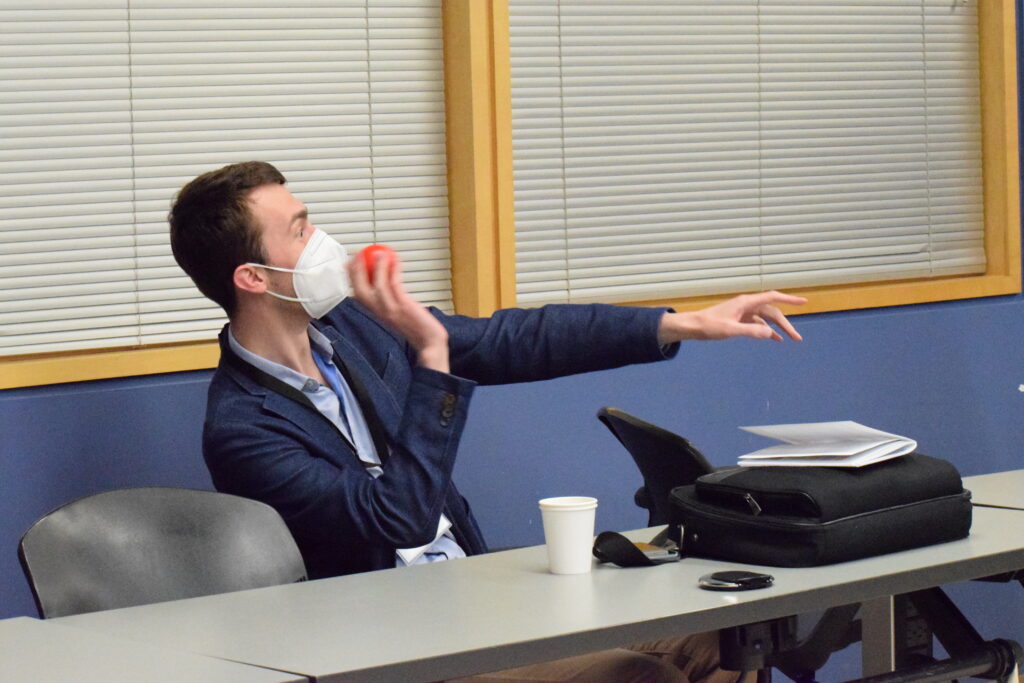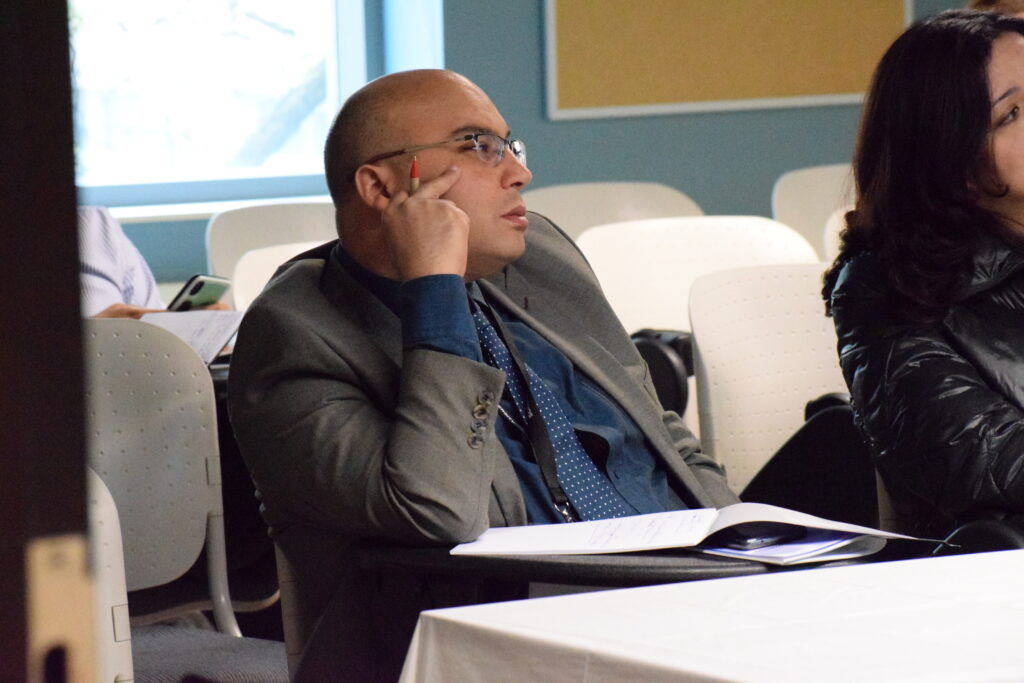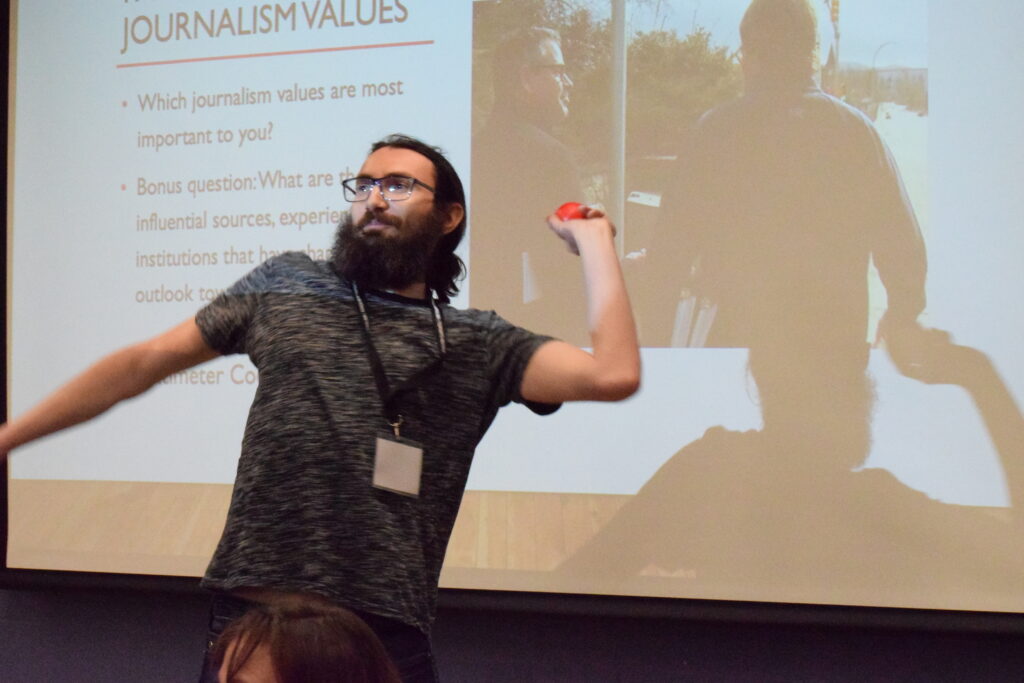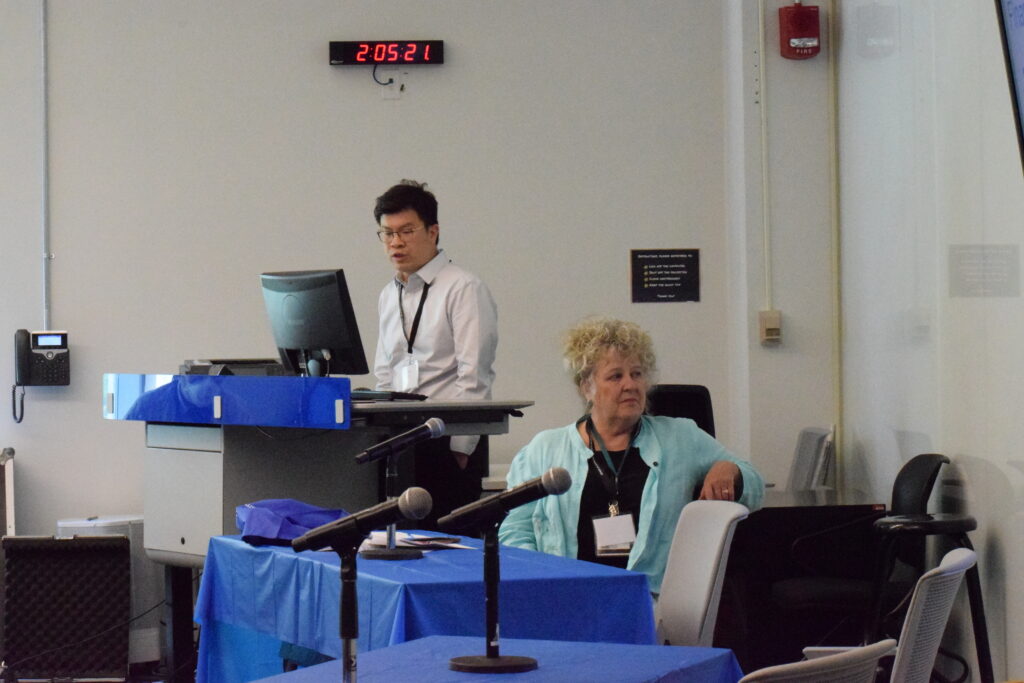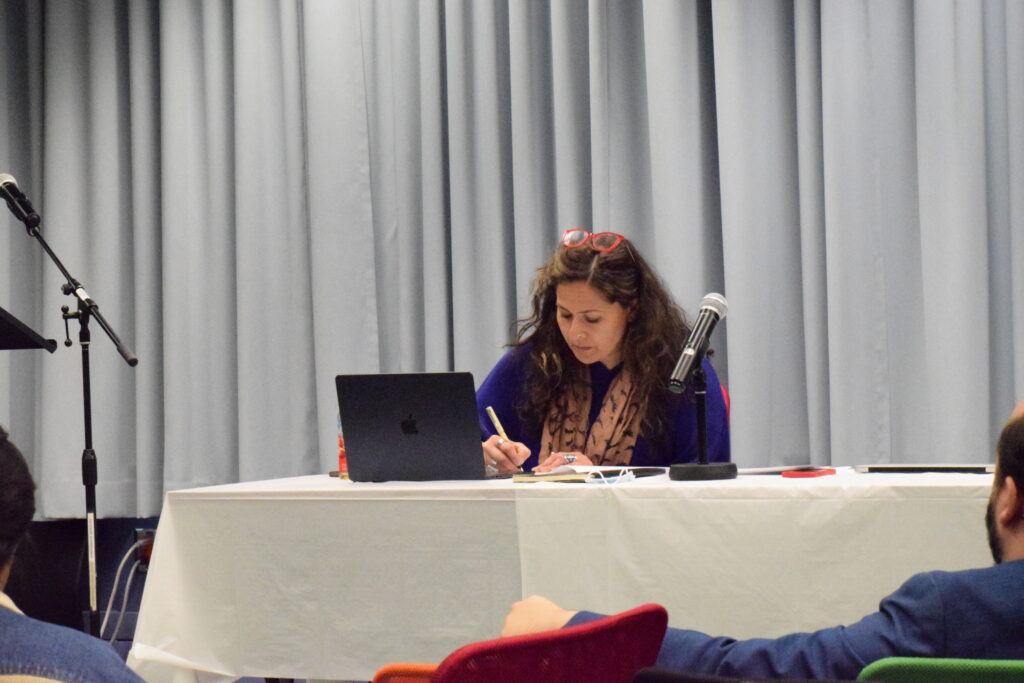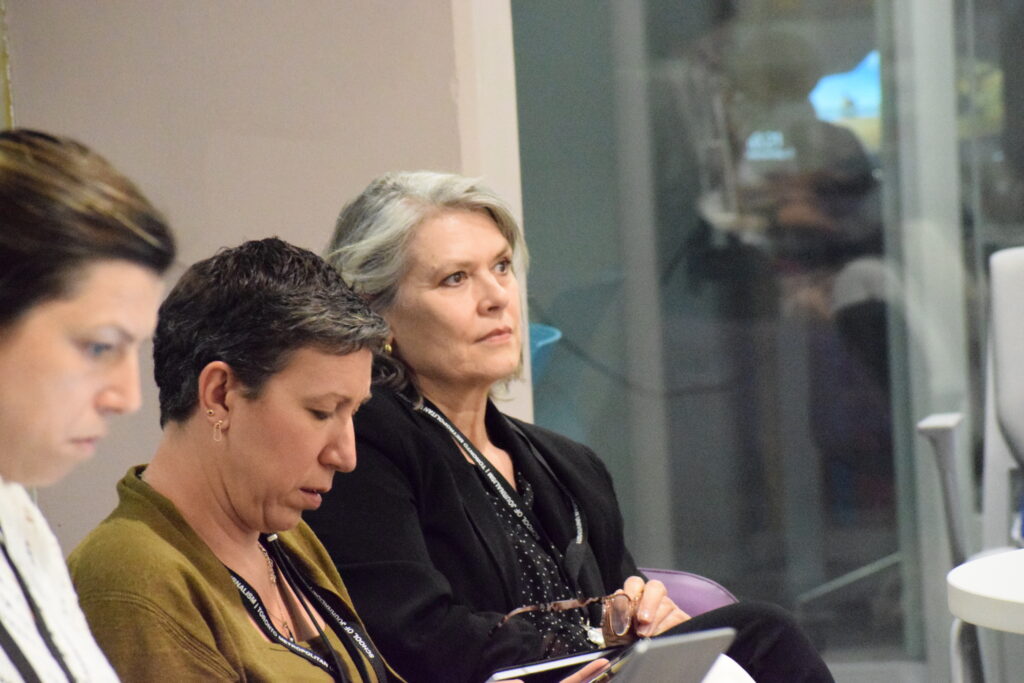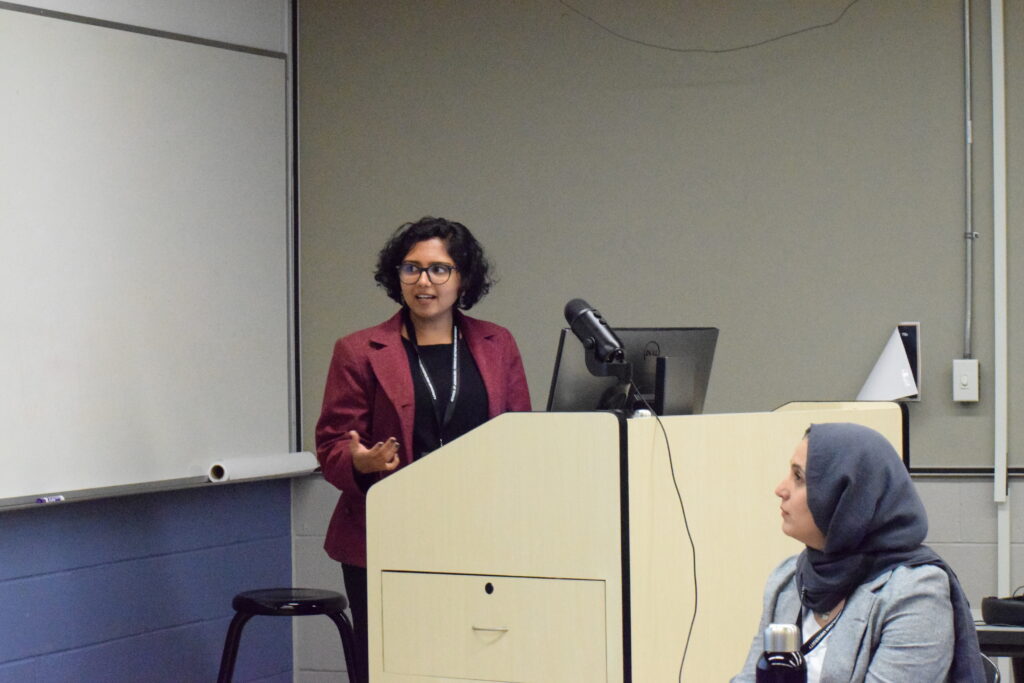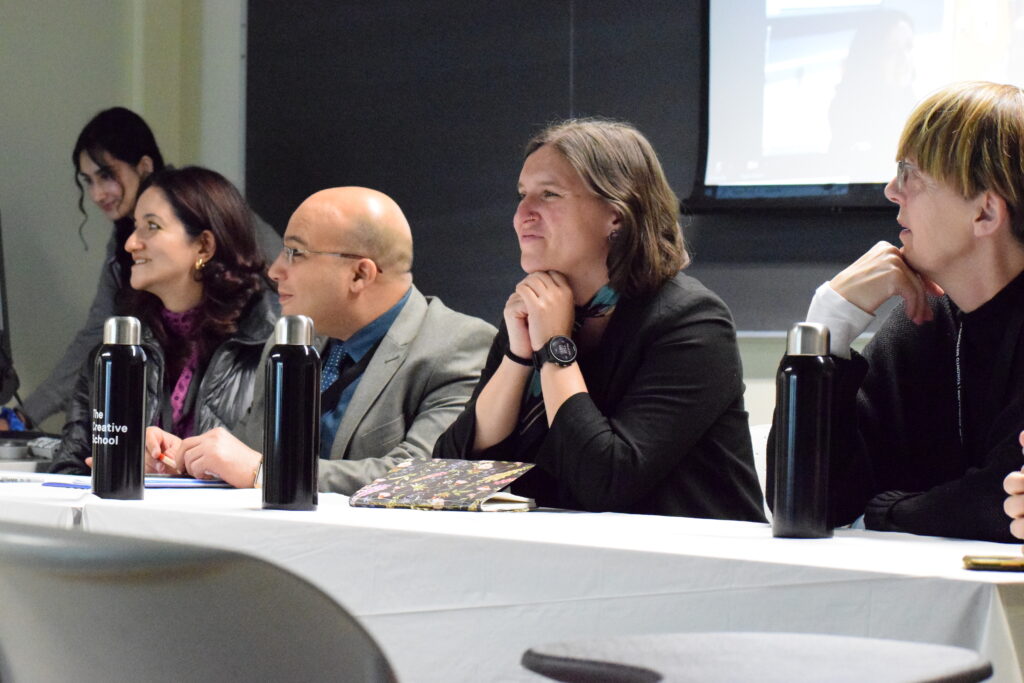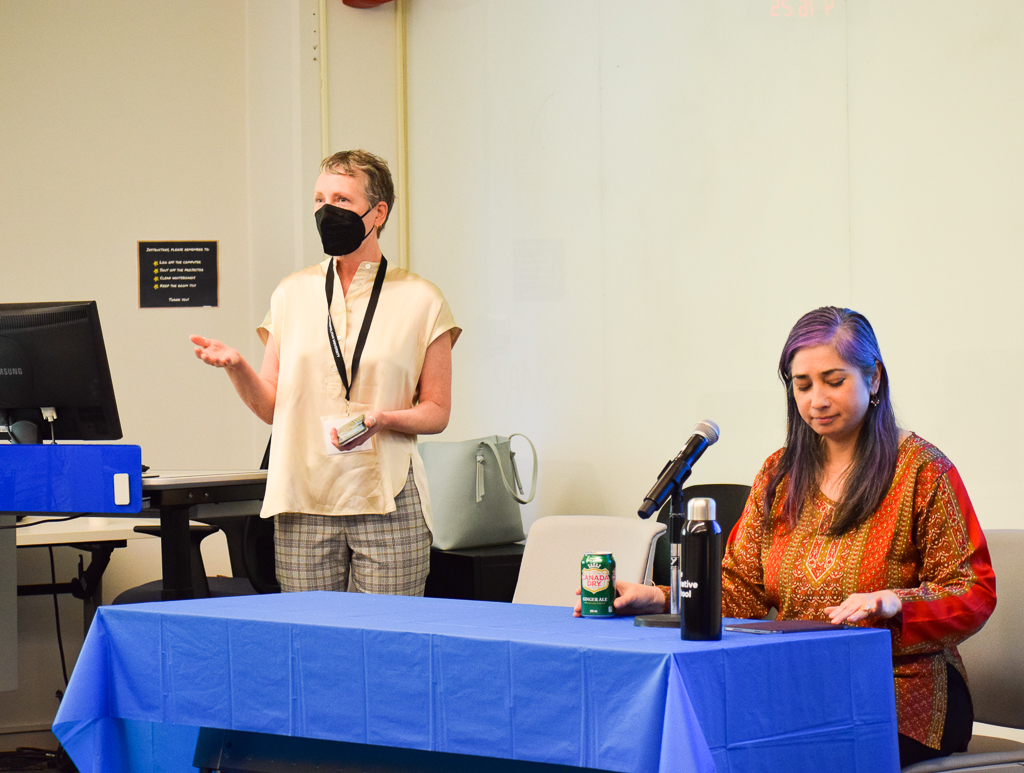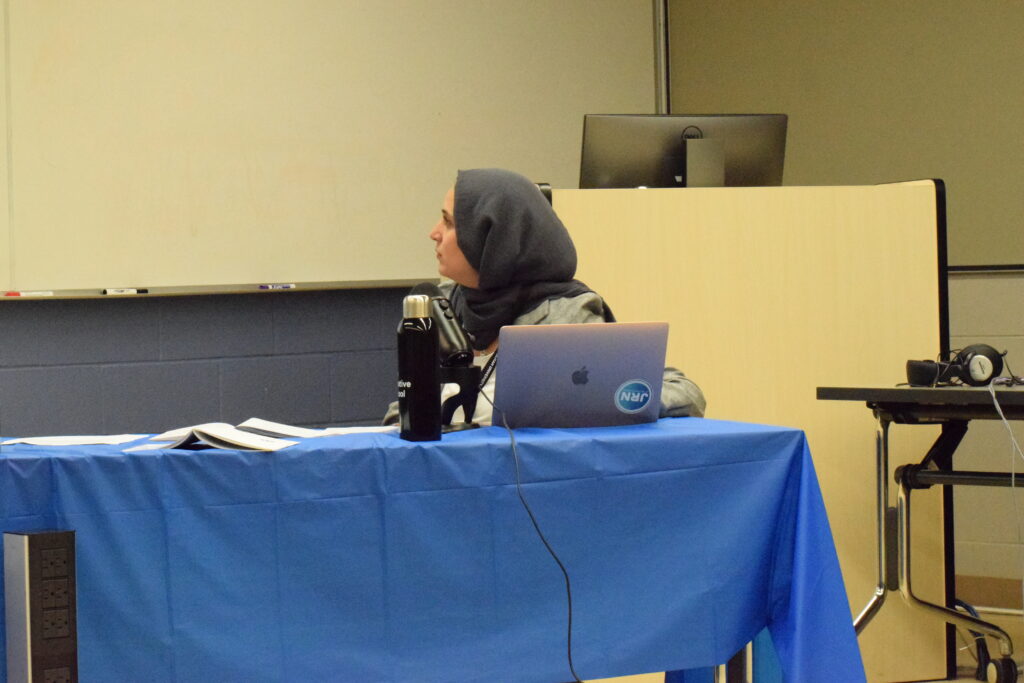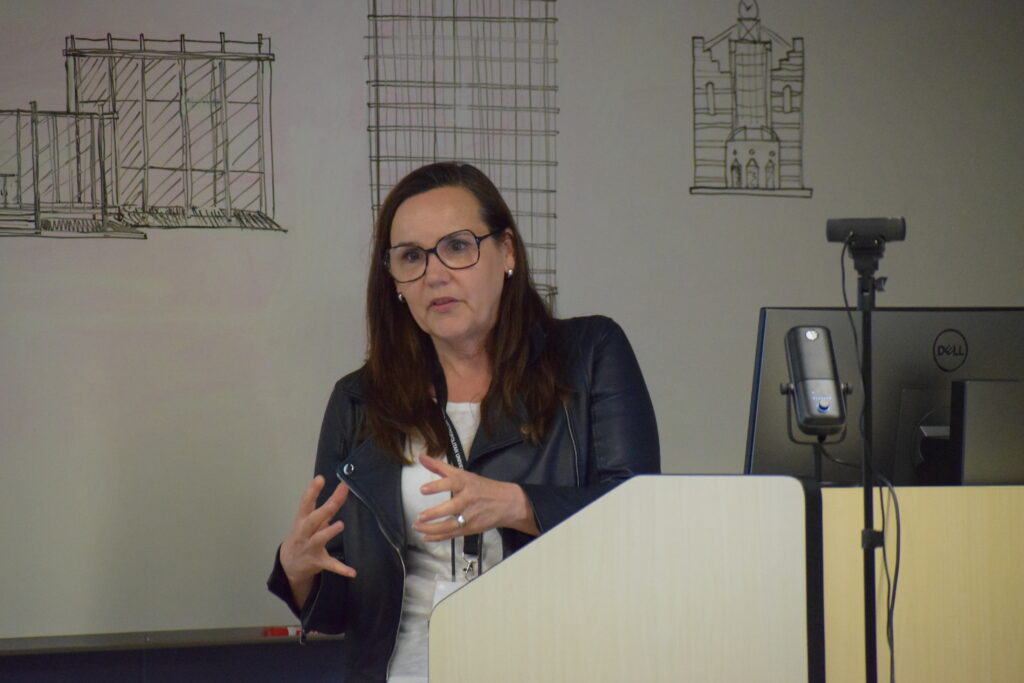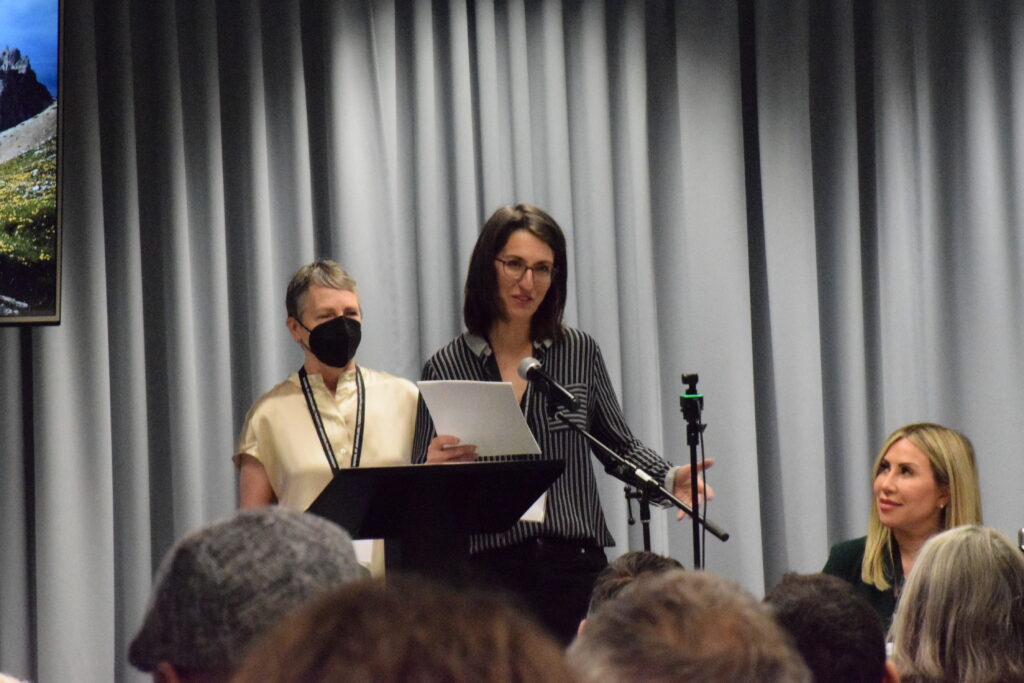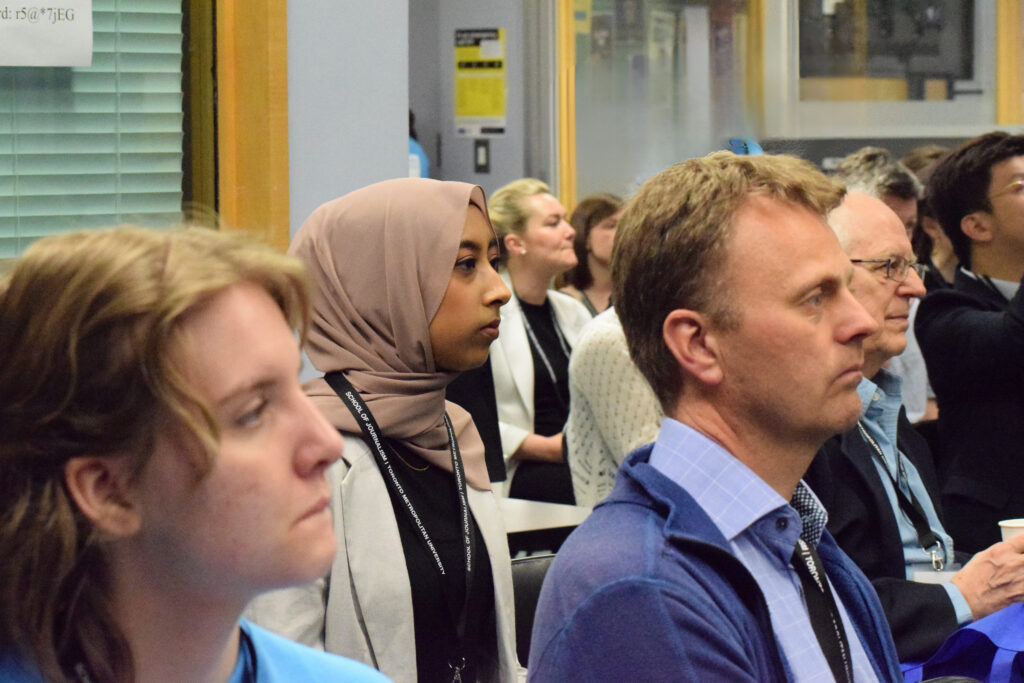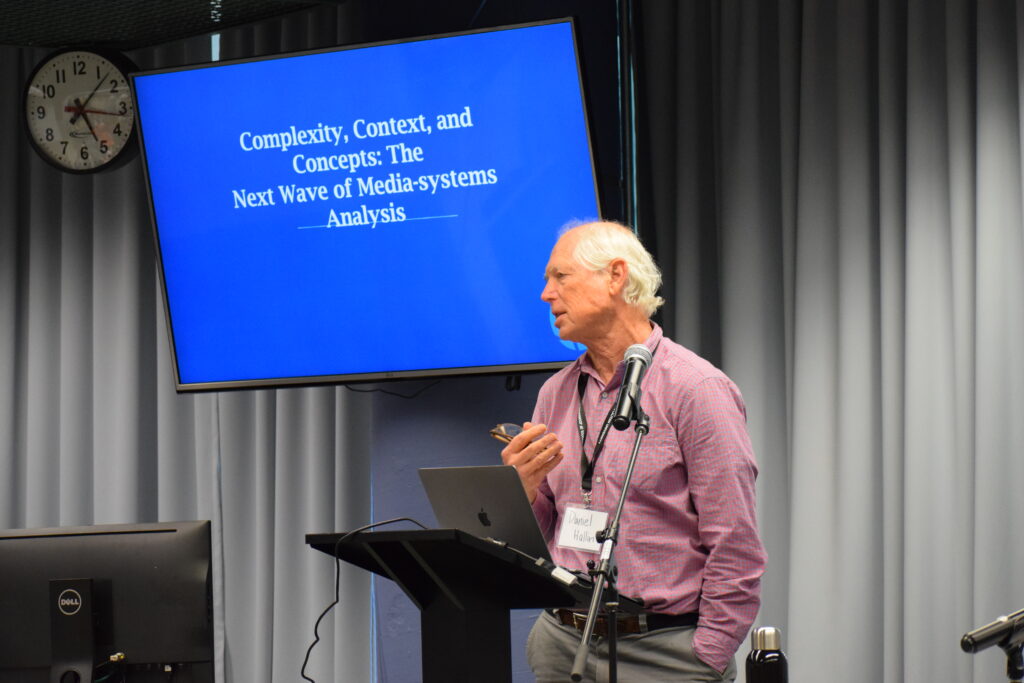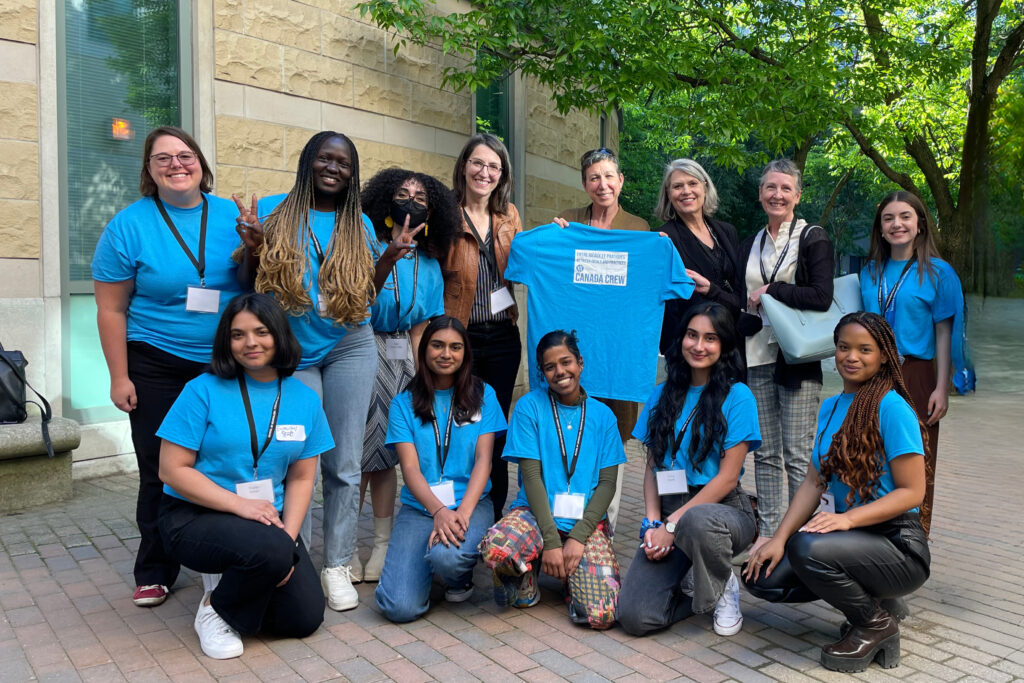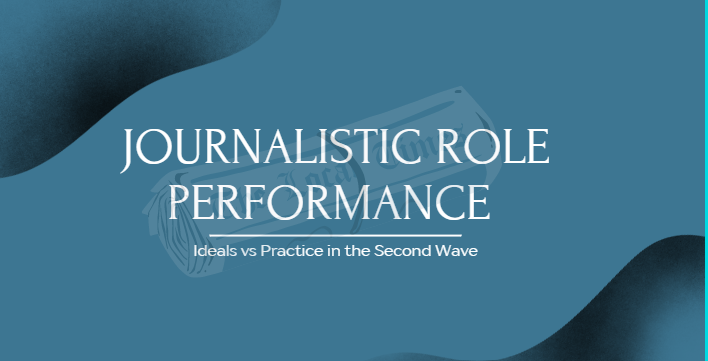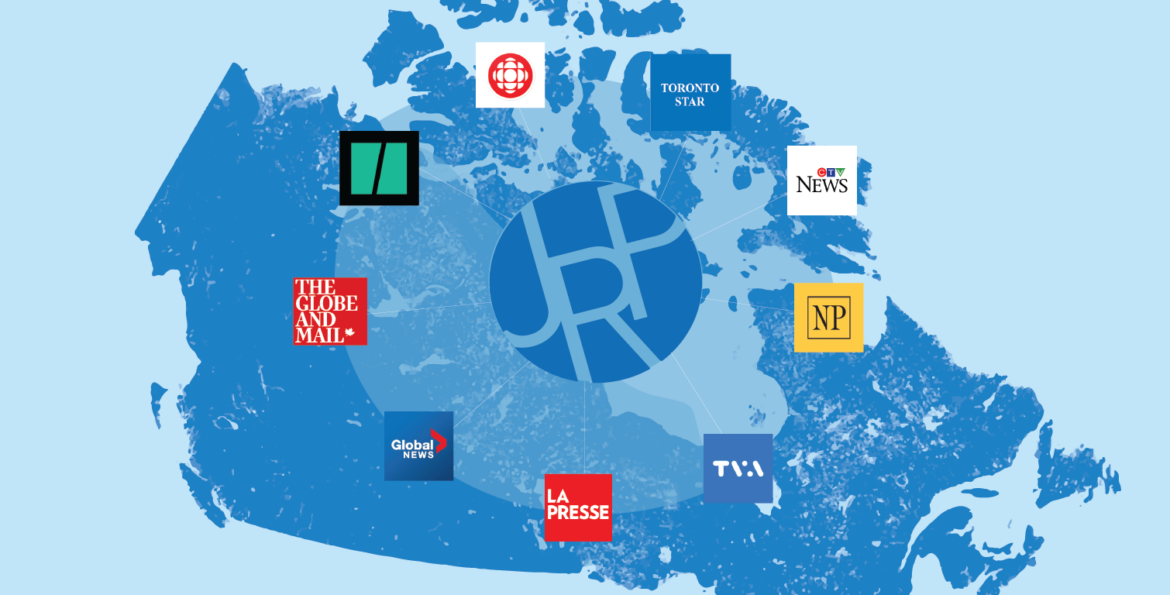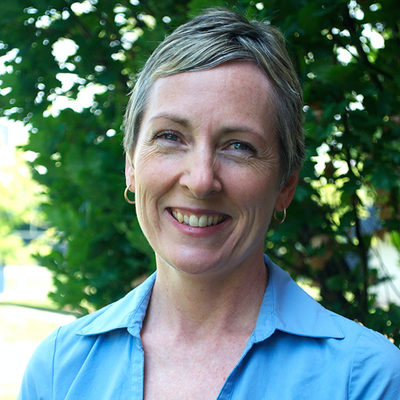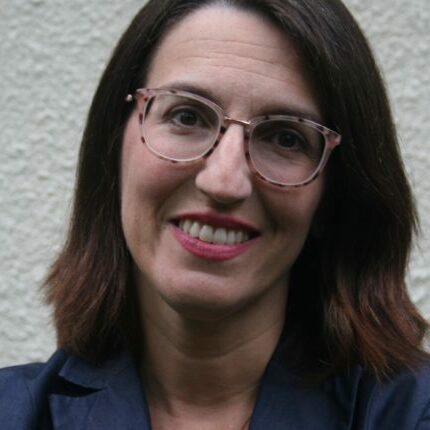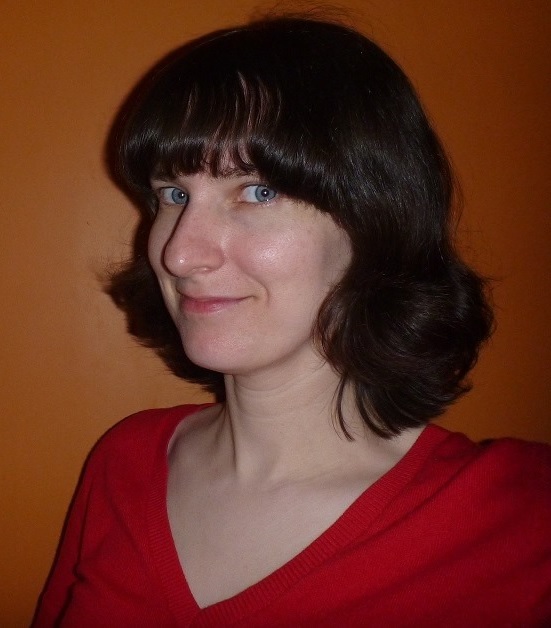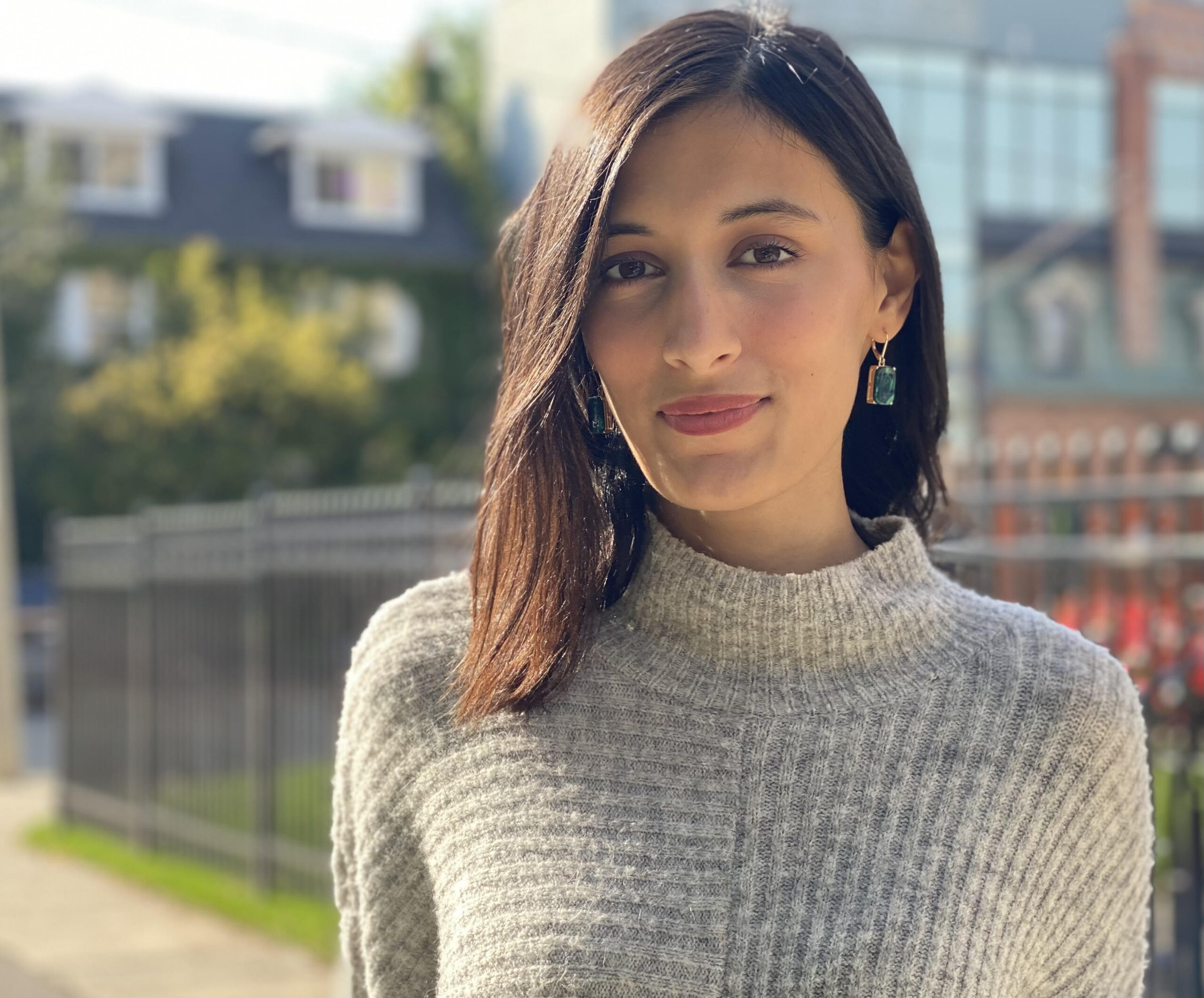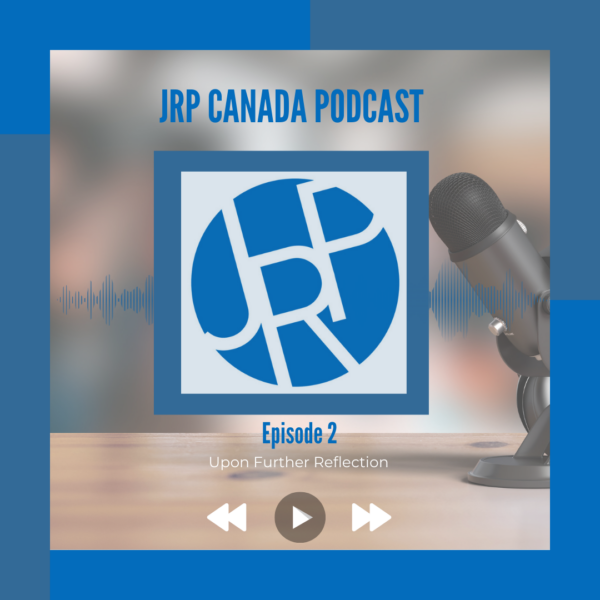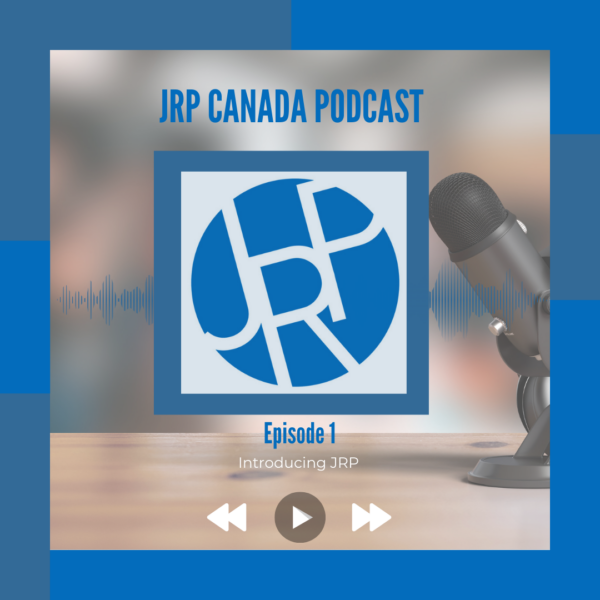Offered in both English and French, the JRP Canada team has created a slideshow template to support academics, students and speakers in presenting accessible presentations to their audiences. The visual and oratory tips included that can be adapted and applied to any presentation and media formats.
Sama Nemat Allah
Bots and Analytics: How does the growth of AI make space for better journalism?
Tech is changing journalism, but that could be a good thing
The increasing integration of automation into journalistic life is often coupled with discussions of job threats, loss of identity, and an increase of disinformation.
And while fears are not unfounded–in every field, artificial intelligence comes with a slew of ethical and technical challenges–industry experts believe that the evolution of tech can change journalistic roles and work for the better.
In a panel presented virtually at Toronto Metropolitan University’s Creative School and moderated by School of Journalism professor Nicole Blanchett, digital journalism specialists highlighted that despite an onslaught of discourse suggesting otherwise, AI isn’t replacing journalists – it’s letting them do more of the work they were intended to do.
“We all became journalists to change the world, to find and tell news that can change people’s lives,” said Sonali Verma, the deputy head of audience at the Globe and Mail and the director of business development of the Globe’s Sophi.io, an artificial intelligence and machine learning platform. “Not to move headlines up and down the page based on how many clicks they’re getting, or how many subscriptions they’re generating.”
AI supports newsrooms, she notes, by taking care of “grunt work” and re-orienting human journalistic resources towards more rigorous reporting. At the Associated Press, for example, automation has freed up 20 per cent of its reporters’ time that would otherwise be dedicated to corporate earnings coverage. The Canadian Press is also using automation in order to dedicate more time to enterprise reporting.
Lucas Timmons, a news automation developer for Torstar, said the ascent of artificial intelligence means the automation of time-consuming reporting, particularly in the sports and business domains of journalism, where programs can be coded to quickly translate scores and stats into news stories for audiences.
AI has also led to the emergence of new journalistic jobs like Timmons’, which sees him writing software that finds, cleans, and processes structured and unstructured data into written narrative stories. And that of Katie Kutsko, an education and strategy manager for the American Press Institute, and another of the event’s panelists, who trains newsrooms on how to strategically use audience data.
Referring to making audience data easily digestible and actionable for journalists, Prasanna Rajagopalan, the director of journalism and programming at CBC Toronto, said, “We really want to ensure that our journalists are focused on the storytelling and getting to the heart of the matter.” And with journalists being expected to cover multiple beats, perform a number of journalistic roles, all while consuming and aggregating a massive repository of data into stories, AI, says Rajagopalan, simplifies the content-creation of an ever-complex and ever-changing industry.
Now more than ever, the panelists agreed, no matter the role, being a journalist means working and understanding data. And while that’s bolstered a reporter’s job description, it also makes for more dynamic roles. According to Verma, adopting “radical data transparency” in the Globe and Mail has created a newsroom culture where every journalist is given the tools to look into and question the data themselves, embracing their journalistic disposition as “professional skeptics.”
Journalism is evolving and it’s becoming more intertwined with tech, so if you’re technologically or mathematically-inclined, says Timmons, “this is a growth area” and J-schools have to be training their students to work with this machinery.
But in every facet of AI, journalists still remain indispensable to the journalistic process. Currently, no evidence suggests that automation has led to a loss of employment. The true danger lies in allowing machines to exist independent of human supervision and editorial decision-making.
No matter what tool you’re using, says Kutsko, whether it’s Sophi, Google Analytics, or Metrics for News, newsrooms are invariably encouraged to “look at data as a signal,” said Kutsko
“It’s never going to replace your human editorial judgement – it’s going to enhance it.”
This presentation, from the 2022 RUBIX conference at Toronto Metropolitan University, introduces the JRP project and situates preliminary findings within the Canadian context. Listen to research assistant Sama Nemat Allah briefly unpack and examine early results of the JRP project.
Nicole Blanchett, principal investigator of the Canadian JRP Project, and team members Karen Owen of Mt. Royal University and RA Sama Nemat Allah of Toronto Metropolitan University’s School of the Journalism, discuss challenges and preliminary results of the JRP Project.
Project Explainer
Determining the significance and prominence of the gap between journalistic ideals and practice is the focus of the second wave of the Journalistic Role Performance (JRP) project, a cooperative effort involving 37 countries from the Global North and South. This potential gap is being measured by examining journalists’ attitudes (through surveys) and their professional practice (through content analysis), to identify the ways in which different journalistic roles, for example the watchdog or infotainment roles, are present in the news content of television, radio, print, and online media, and the influence that different media systems might have on the performance of these roles across platforms.
For analysis, journalistic roles are divided into six dimensions. The first is the interventionist role, where a journalist self-inserts into the narrative by taking a side or promoting an action. The second and third roles consider power relations — the watchdog’s role includes critiquing the government, while the loyal facilitator supports government narratives. The last three roles examine the relationship a journalist has with its audience: in the service role, journalists cover anything from consumer tips to food and health recommendations; in the infotainment role, reporters create content that is geared more to entertain than inform; and finally, in the civic role, coverage centers on the perspectives and rights of citizens.
In Canada, there are 12 sites of study from English and French media: The Globe and Mail, Toronto Star, National Post, La Presse, CBC.ca, HuffPost Canada, CBC Radio’s World Report, Radio Canada’s l’heure du monde, CTV National News, CBC’s The National, Global National, and TVA Nouvelles.
Over the past decade much attention has been paid to theorizing the different concepts that come into play when we analyze journalistic role performance. For example, how do these roles manifest in both news decisions and news outcomes that reach the public? In this respect, journalistic role performance studies offer us with more diverse perspectives on the practice of journalism around the world, particularly in countries where evaluative elements are less articulated in practice. A recently released book, Beyond Journalistic Norms, edited by leading researcher Claudia Mellado, highlights findings from the first wave and differences between “normative visions and actual practices.”

